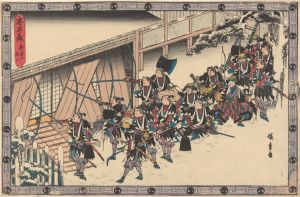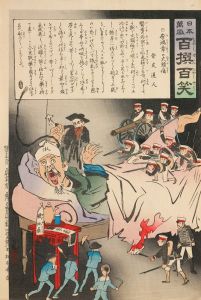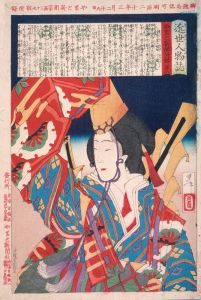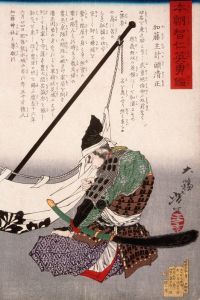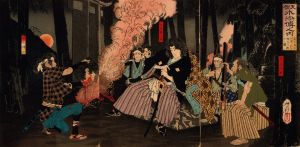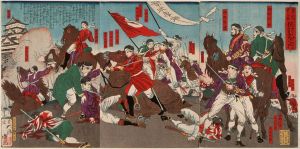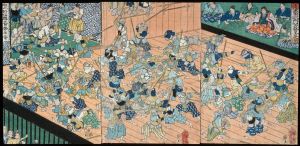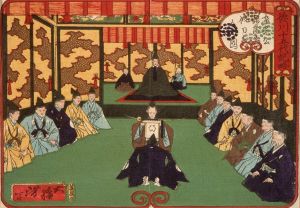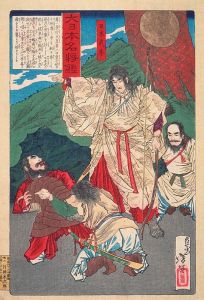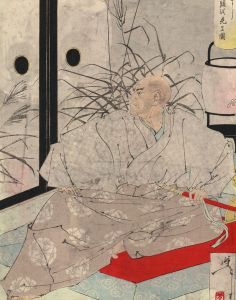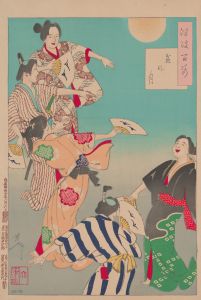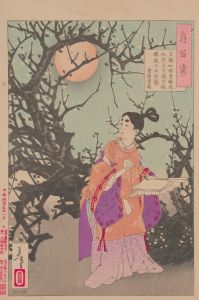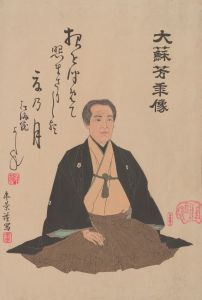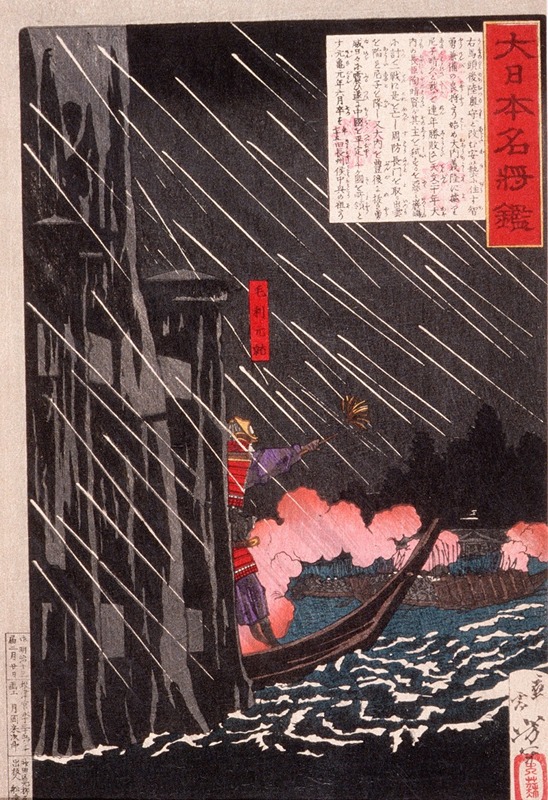
Mōri Motonari Attacking Sue Harutaka at Itsukushima
A hand-painted replica of Tsukioka Yoshitoshi’s masterpiece Mōri Motonari Attacking Sue Harutaka at Itsukushima, meticulously crafted by professional artists to capture the true essence of the original. Each piece is created with museum-quality canvas and rare mineral pigments, carefully painted by experienced artists with delicate brushstrokes and rich, layered colors to perfectly recreate the texture of the original artwork. Unlike machine-printed reproductions, this hand-painted version brings the painting to life, infused with the artist’s emotions and skill in every stroke. Whether for personal collection or home decoration, it instantly elevates the artistic atmosphere of any space.
Tsukioka Yoshitoshi was a renowned Japanese artist known for his work in ukiyo-e, a genre of woodblock prints and paintings that flourished in Japan from the 17th through 19th centuries. One of his notable works is "Mōri Motonari Attacking Sue Harutaka at Itsukushima," which captures a significant historical event from the Sengoku period, a time of social upheaval, political intrigue, and near-constant military conflict in Japan.
The artwork depicts the Battle of Itsukushima, a pivotal conflict that took place in 1555. This battle was part of the larger power struggles during the Sengoku period, where various daimyōs (feudal lords) vied for control over different regions of Japan. Mōri Motonari, a prominent daimyō known for his strategic acumen, led his forces against Sue Harutaka, a rival who had taken control of the Aki Province.
Mōri Motonari is celebrated in Japanese history for his cunning and tactical brilliance. The Battle of Itsukushima is often cited as a prime example of his strategic prowess. Motonari's forces were significantly outnumbered, yet he devised a plan to lure Sue Harutaka into a trap. He feigned weakness by retreating to the island of Itsukushima, a sacred site, which Sue Harutaka saw as an opportunity to crush Motonari's forces decisively.
The battle took place on the island of Itsukushima, home to the famous Itsukushima Shrine, a UNESCO World Heritage site known for its iconic "floating" torii gate. The choice of this location was strategic; Motonari understood the religious significance of the site and used it to his advantage. By retreating to the island, he not only protected his forces but also leveraged the terrain to neutralize the numerical superiority of Sue Harutaka's army.
On the night of October 16, 1555, Motonari launched a surprise attack. His forces, familiar with the terrain and bolstered by the element of surprise, overwhelmed Sue Harutaka's troops. The battle resulted in a decisive victory for Mōri Motonari, solidifying his control over the region and enhancing his reputation as a master strategist.
Tsukioka Yoshitoshi's depiction of this event captures the drama and intensity of the battle. Known for his dynamic compositions and attention to detail, Yoshitoshi's work often reflects the complex interplay of historical narrative and artistic expression. In "Mōri Motonari Attacking Sue Harutaka at Itsukushima," he brings to life the tension and chaos of the battlefield, highlighting the bravery and tactical genius of Mōri Motonari.
Yoshitoshi's work is significant not only for its artistic merit but also for its role in preserving and interpreting historical events. Through his prints, he contributed to the popular understanding of Japan's feudal past, offering insights into the lives and struggles of historical figures like Mōri Motonari. His portrayal of the Battle of Itsukushima serves as a visual narrative that complements historical records, providing a vivid illustration of a key moment in Japanese history.
Overall, "Mōri Motonari Attacking Sue Harutaka at Itsukushima" stands as a testament to both the historical significance of the battle and the enduring legacy of Tsukioka Yoshitoshi as a master of ukiyo-e.





